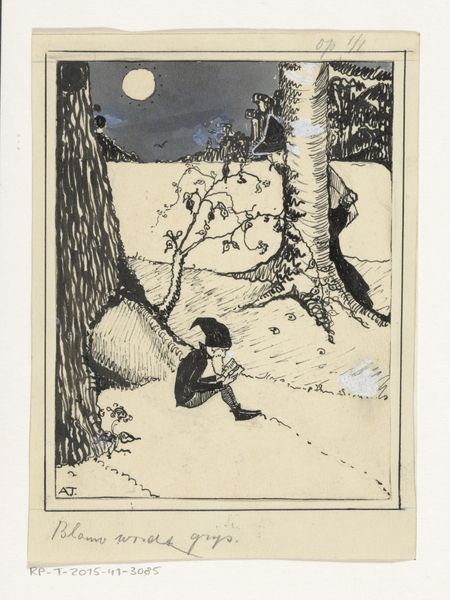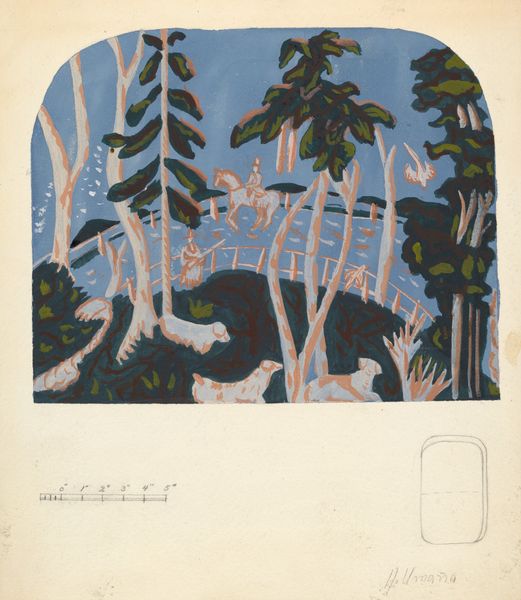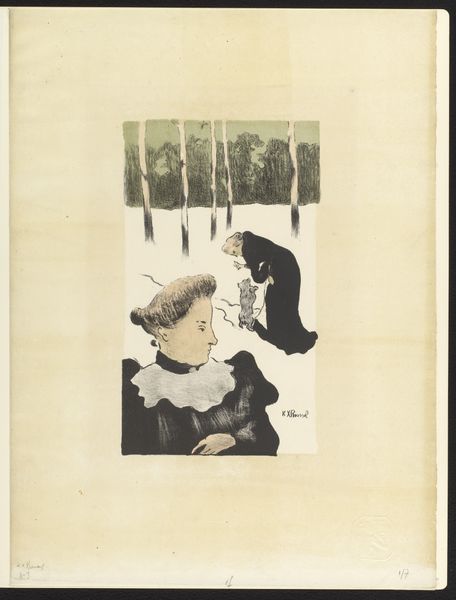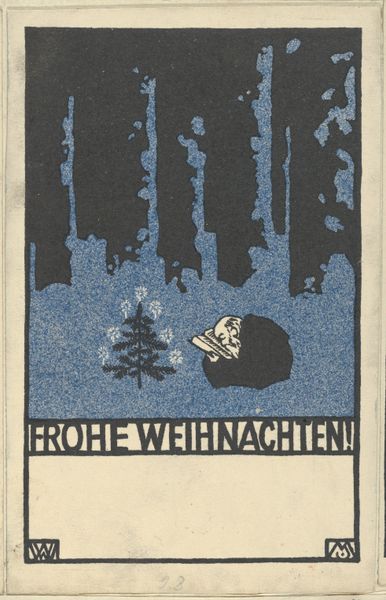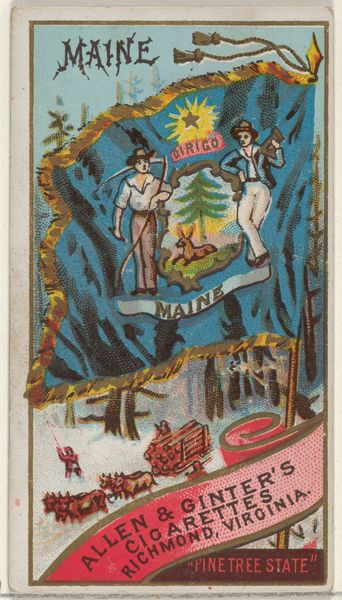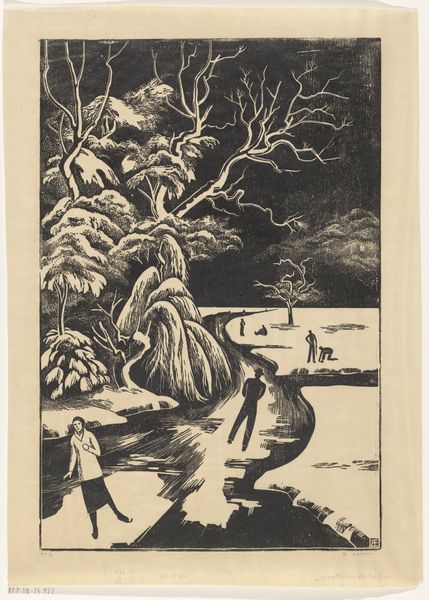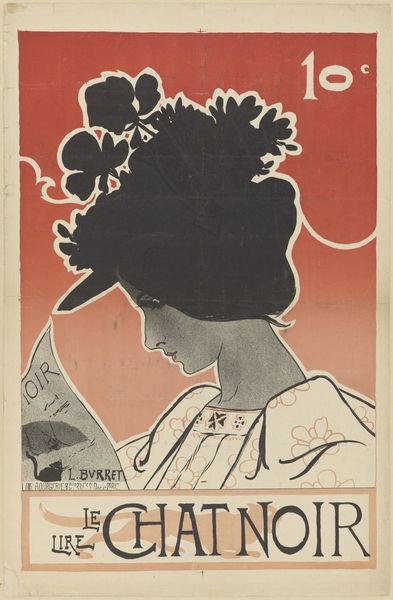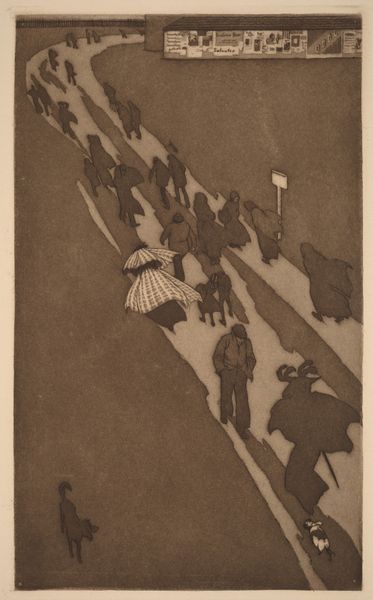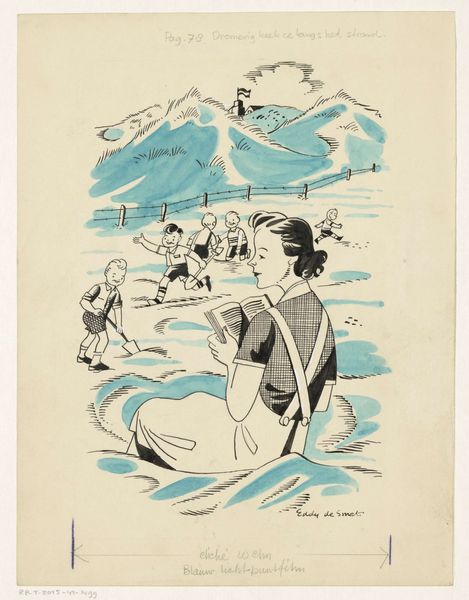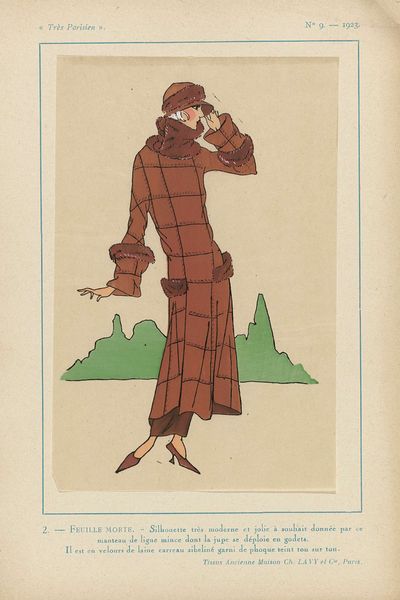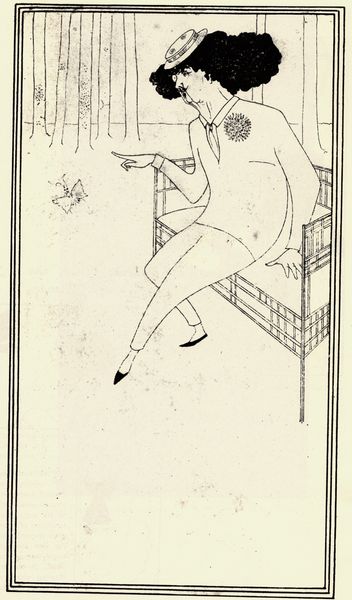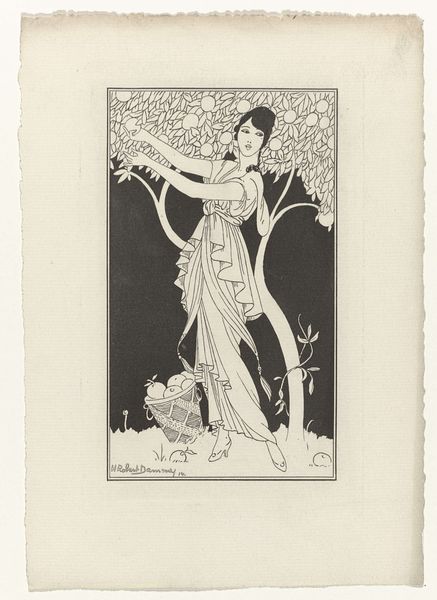
Bandontwerp voor: Max Glass, Het mysterie van den hartstocht (Das mysterium der Leidenschaft), 1923 before 1923
Dimensions: height 205 mm, width 141 mm
Copyright: Rijks Museum: Open Domain
Curator: Immediately, this poster evokes a sense of profound stillness in me. There is such spareness in the line work and composition of “Bandontwerp voor: Max Glass, Het mysterie van den hartstocht (Das mysterium der Leidenschaft),” a design attributed to Henri Verstijnen, dating from around 1923. Editor: What intrigues me is how Verstijnen navigates the interplay of labor and symbolism in the Art Nouveau tradition. Consider that this isn't just art for art's sake; it’s a commercial poster design made using fairly accessible mediums like ink and linocut. These materials, processes, and choices about accessibility say a lot about reaching a wider audience beyond the art elite, democratizing visual culture. Curator: That’s true. And look at the figure in the image, almost suspended between the earthly landscape and a symbolic spiritual realm as she holds a flame. Her upward gaze towards a sky pierced by birds in flight, her posture, it speaks of a yearning for something beyond immediate reach, a narrative pregnant with the emotional and spiritual hunger that permeated the post-World War I era in Europe. Editor: Right. The book’s title translates to “The Mystery of Passion." When positioned against the backdrop of gender and identity dynamics of that period, you might view the woman's upward gaze not only as a spiritual longing, but as the desire of female emancipation, a search for intellectual freedom. She seeks inspiration and knowledge mirrored by the open sky and her own flame, challenging patriarchal narratives that seek to confine her ambitions. Curator: The simple technique here amplifies that message of reaching more people through powerful images. The flat application of color further emphasizes that it is a poster meant to attract viewers' attention quickly, functioning almost as an icon for a larger philosophical message in Max Glass’ work. Editor: Yes, examining the materiality of art in this context enhances our insight into the function, circulation, and consumption of these images during that specific time period, while exploring topics like desire, hope, and change. Curator: Ultimately, Verstijnen offers us a deceptively simple design pregnant with questions. Editor: Absolutely, and perhaps that questioning spirit is what continues to draw us back to these images and themes century after.
Comments
No comments
Be the first to comment and join the conversation on the ultimate creative platform.
